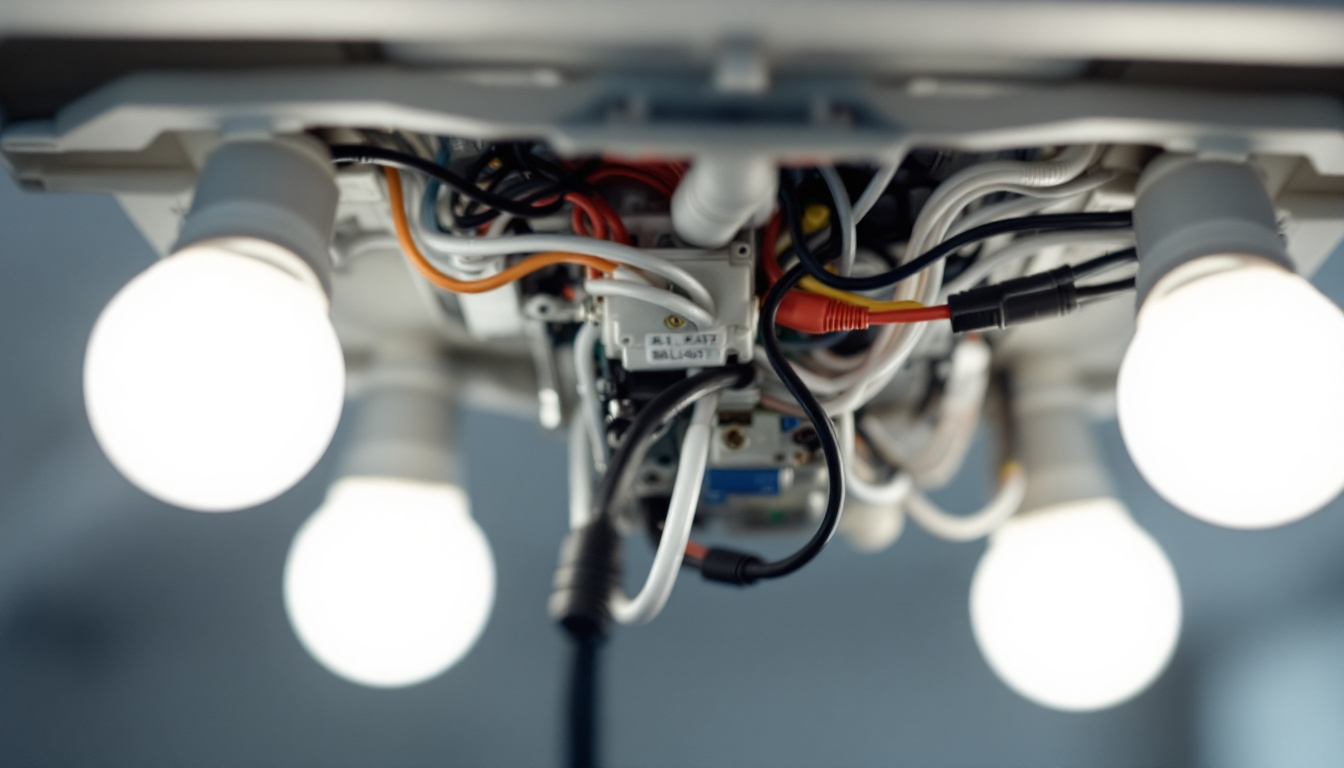
In the world of lighting, electrical ballasts play a crucial role in ensuring the efficiency and longevity of light fixtures. For lighting contractors, understanding the various types of ballasts and their applications can significantly enhance project outcomes and client satisfaction. This article delves into proven methods and best practices for utilizing electrical ballasts effectively.
Electrical ballasts are devices that regulate the current to fluorescent and HID (High-Intensity Discharge) lamps. They provide the necessary voltage to start the lamp and then limit the current during operation. Without a ballast, lamps would draw excessive current, leading to overheating and eventual failure. This regulation is crucial not only for the longevity of the lamps but also for energy efficiency, as it helps to minimize waste and reduce electricity costs.
There are primarily two types of ballasts: magnetic and electronic. Each type has its own advantages and applications, making it essential for contractors to understand their differences. The choice between these two types can significantly impact the overall performance of a lighting system, influencing factors such as energy consumption, maintenance needs, and lighting quality.
Magnetic ballasts have been in use for decades and are known for their simplicity and durability. They operate using a coil of wire to create a magnetic field that regulates the current. While they are generally less expensive upfront, they can be less energy efficient compared to their electronic counterparts. Additionally, magnetic ballasts can produce a noticeable hum and flicker, which may be undesirable in certain settings, such as offices or homes where a quiet and stable lighting environment is preferred. Despite these drawbacks, they are often favored in industrial applications due to their robustness and reliability in harsh conditions.
Electronic ballasts, on the other hand, use electronic circuits to control the current. They are typically more energy-efficient, produce less heat, and provide better performance in terms of flicker-free lighting and instant start capabilities. However, they tend to have a higher initial cost. The advanced technology in electronic ballasts allows for features such as dimming capabilities and compatibility with smart lighting systems, making them increasingly popular in modern lighting designs. Moreover, their lightweight construction makes installation easier and less cumbersome, which can be a significant advantage for contractors working on large-scale projects.
When selecting a ballast, compatibility with the light fixture and lamp type is crucial. Each lamp type has specific ballast requirements, and using an incompatible ballast can lead to poor performance or even damage to the lamp. Lighting contractors must be diligent in checking compatibility specifications to ensure optimal performance. This includes understanding the wattage, voltage, and starting method required by the lamp, as well as any specific features that may be necessary for the intended application. Additionally, advancements in LED technology have introduced new considerations for ballast compatibility, as many LED lamps are designed to operate without a ballast or require specific types of ballasts to function correctly.
Furthermore, the transition from traditional lighting systems to more energy-efficient options has led to an increased focus on retrofitting existing fixtures with appropriate ballasts. This process not only enhances energy savings but also improves the quality of light in a space. As energy codes become stricter and sustainability becomes a priority, understanding the nuances of ballast selection and compatibility will be essential for contractors aiming to meet both regulatory requirements and customer expectations.
Proper installation of ballasts is vital for achieving the desired lighting performance and longevity. Following best practices can help lighting contractors avoid common pitfalls and ensure a successful installation.
Before beginning the installation process, it is essential to conduct thorough pre-installation checks. This includes verifying that the power supply is turned off, inspecting the fixture for any signs of damage, and ensuring that the correct ballast type is on hand. A checklist can be a valuable tool in this stage to avoid missing critical steps. Additionally, it is advisable to familiarize oneself with the specific requirements of the installation site, such as ceiling height and fixture placement, which can influence the overall effectiveness of the lighting system. Understanding the environment where the ballasts will be installed can also help in selecting the appropriate ballast type, whether it be magnetic or electronic, to match the needs of the lamps being used.
Correct wiring is fundamental to the safe and efficient operation of ballasts. Lighting contractors should follow the manufacturer’s wiring diagrams closely and ensure that all connections are secure. Using wire nuts or soldering connections can provide a more reliable bond than simply twisting wires together. Furthermore, it is important to use the right gauge of wire to handle the current load, as undersized wires can lead to overheating and potential failure of the ballast. Contractors should also consider the use of heat-shrink tubing or electrical tape to insulate connections, providing additional protection against moisture and dust, which can compromise the integrity of the wiring over time.
Once the ballast is installed, conducting a thorough test is essential. This includes checking for proper lamp operation, ensuring there are no flickers, and confirming that the ballast is not overheating. A quick test can save contractors from returning to the site for troubleshooting later. Additionally, it is beneficial to monitor the system over a period of time to identify any delayed issues that may not be immediately apparent. Implementing a follow-up schedule for routine maintenance checks can help in catching potential problems early, ensuring that the lighting system continues to perform optimally and extends the lifespan of both the ballasts and the lamps. Keeping detailed records of installation and testing procedures can also aid in future projects, providing a reference for best practices and lessons learned from previous installations.
Even with proper installation, ballasts may require maintenance or troubleshooting over time. Understanding common issues can help contractors provide better service to their clients.
Recognizing the signs of ballast failure is crucial for timely intervention. Common indicators include flickering lights, buzzing sounds, or lamps that do not light up at all. If any of these symptoms are present, it is advisable to inspect the ballast for potential issues. Additionally, a sudden increase in energy consumption may also signal that the ballast is struggling to operate efficiently. Regular monitoring of lighting performance can help identify these problems early, preventing more significant issues down the line.
When a ballast fails, contractors must consider whether to replace it with the same type or upgrade to a more efficient model. Upgrading to an electronic ballast can often lead to energy savings and improved lighting quality, making it a worthwhile consideration. Furthermore, electronic ballasts typically operate at a higher frequency, which can reduce flicker and enhance the lifespan of the connected lamps. It’s also essential to evaluate the compatibility of the new ballast with existing fixtures and lamps to ensure optimal performance and avoid future complications.
Another factor to consider during replacement is the environmental impact of the old ballast. Many traditional magnetic ballasts contain hazardous materials, such as PCBs, which require careful disposal according to local regulations. Contractors should be aware of these regulations and provide clients with information on safe disposal methods, as well as the benefits of switching to more environmentally friendly options. By educating clients on the advantages of modern ballasts, including their energy efficiency and lower maintenance needs, contractors can help foster a more sustainable approach to lighting solutions.
As energy efficiency becomes increasingly important in the lighting industry, the role of ballasts in promoting sustainability cannot be overlooked. Lighting contractors have a unique opportunity to contribute to energy conservation efforts through informed ballast choices.
Opting for energy-efficient ballasts can significantly reduce energy consumption in lighting systems. Electronic ballasts, for instance, typically consume less power than magnetic ballasts. Additionally, many energy-efficient models are designed to work with LED lamps, further enhancing overall system efficiency.
Many regions offer incentives and rebates for upgrading to energy-efficient lighting systems, including ballasts. Lighting contractors should stay informed about available programs to help clients save on installation costs while promoting sustainability. This not only benefits the environment but can also enhance the contractor’s reputation as a provider of energy-efficient solutions.
The lighting industry is continually evolving, and advancements in ballast technology are no exception. Staying abreast of these trends can help lighting contractors remain competitive and provide the best solutions for their clients.
Smart technology is making its way into ballast design, allowing for enhanced control and integration with building management systems. Smart ballasts can adjust lighting levels based on occupancy or ambient light conditions, leading to improved energy savings and user comfort.
As LED technology continues to dominate the lighting market, compatibility with LED lamps is becoming a key focus for ballast manufacturers. Newer ballasts are designed specifically for LED applications, providing better performance and energy efficiency than older models.
For lighting contractors, a comprehensive understanding of electrical ballasts is essential for delivering high-quality lighting solutions. By familiarizing themselves with the different types of ballasts, installation best practices, maintenance techniques, and emerging trends, contractors can enhance their service offerings and contribute to a more sustainable future in lighting.
As the industry continues to evolve, staying informed and adapting to new technologies will be crucial for success. Embracing energy-efficient practices and leveraging advancements in ballast technology can help contractors not only meet client expectations but also exceed them, ultimately leading to a more successful business.
Ready to elevate your lighting projects with the highest quality ballasts and fixtures? Look no further than LumenWholesale. Our extensive selection of spec-grade lighting products ensures that you have access to the best solutions for any installation. With unbeatable wholesale prices and the convenience of free shipping on bulk orders, you can trust that you’re getting superior value without any hidden costs. Don’t compromise on quality or affordability. Visit LumenWholesale today and discover the perfect blend of performance and price for your lighting needs.

Discover how home flood lights are reshaping the financial landscape for lighting contractors.

Discover the step-by-step guide to bypassing ballasts in 4-bulb fixtures, ensuring your lighting projects are efficient and future-ready.

Discover how high-quality solar lights can transform your business and secure more lighting contracts.

Discover innovative hacks for smart lighting contractors to optimize push light switch installations.